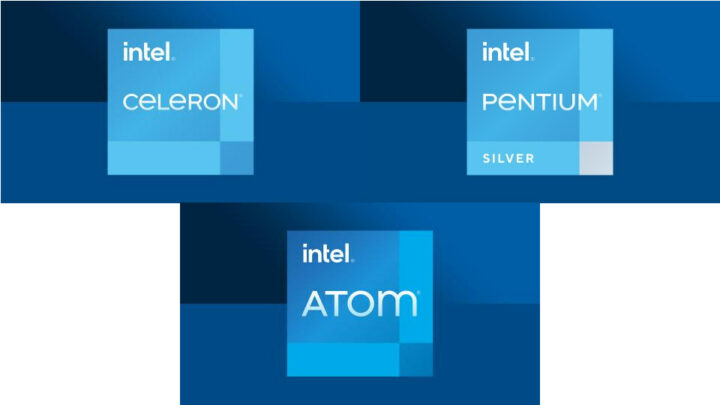Intel Alder Lake-N processors succeeding Jasper Lake processors are likely to soon show up in Chromebooks and embedded systems with early clues about the features of the upcoming processors found in the source tree of Coreboot and the Sound Open Firmware (SOF) Project.
The person or team at Coelacanth’s dream has been analyzing the commits related to Alder Lake-N and found some interesting information related to the CPU cores, GPU, media capabilities, and peripherals, plus some reference boards by the Google Chromium team.
Their latest update analyzes a partial boot log in the SOF Project and so far we know that:
- Alder Lake-N is an Atom-only “Gracemont” processor (no hybrid variant like Alder Lake-S desktop processors) with up to 8 threads/8 cores
- Alder Lake-N has two 4-core clusters that share the L2 cache
- The new processors should come with Intel UHD Gen12 graphics just like Alder Lake-P/M mobile processors, but limited to 32 EU (Execution Units)
- LPDRR5 memory support
- Gen12 Media means support for 8Kp60 VP9, AV1, H.265, and H.264 video decoding, and 8Kp60 encoding
- PCIe interfaces – None attached to the CPU, up to 5 ports, up to 9 lanes attached to PCH
- USB – Up to 2x USB interfaces with Type-C support
- Alder Lake-N Chromebook board is codenamed Nissa with variants named Nivviks, and Nereid.
Coelacanth’s dream says many of the features are similar to Elkhart Lake and Jasper Lake processors, but the Gracemont cores should provide significantly better performance and the latest Intel UHD Gen12 (Intel Xe) graphics should also provide a boost in 3D graphics performance.
While most Alder Lake processors are so-called “hybrid processors” with both performance and efficiency cores, Alder Lake-N will only come with efficiency cores. Since Jasper Lake processors are limited to four cores, and it’s the same story for Elkhart Lake embedded/IoT processors, the new Atom/Pentium/Celeron processor should perform even better in multi-threaded workloads with up to 8 cores.
Since Intel has not unveiled the new processors yet, it may take several months/quarters before those become available in products.
Via Tom’s Hardware

Jean-Luc started CNX Software in 2010 as a part-time endeavor, before quitting his job as a software engineering manager, and starting to write daily news, and reviews full time later in 2011.
Support CNX Software! Donate via cryptocurrencies, become a Patron on Patreon, or purchase goods on Amazon or Aliexpress






Xe graphics should really be the base standard across the board right now.
Another poor show from Intel.
Pretty sure Gen12 == Xe graphics.
Yes, it’s my understanding too. But sometimes Intel will write “Intel Xe” clearly, and others refer to it as “Intel UHD graphics”.
Pretty sure Gen12 = Castrated Xe.
and Xe itself can be differentiated to: -> Xe basic, Xe standard, Xe top (as of Iris).
This is Intel, baby! What do you expect 😀
What is the difference other than the number of execution units?
I don’t really know. My guesss is combination between GPU frequency and execution units.
I think intel can say “thank you” to Arm’s fragmentation here, because when you take an x86 chip, almost everything works out of the box, while with Arm SoCs you still have months of development to bring the platform to a usable state. IMHO there’s still a lot of progress to be made there so that Arm works out of the box regardless of the SoC vendor. Their smartphone-only focus at the moment might not be relevant to the laptop market.
Especially if Intel provide out of the box fully working drivers for Linux, full media and GPU too.
And RISC-V will face the same fragmentation issues. The death of x86 has been greatly exaggerated.
RISC-V will be much worse due to extensions and custom instructions. There will be as many incompatible RISC-V implementations at the binary level as there will be vendors. This will remind us some of the MIPS period of glory when you couldn’t move a binary between two machines without seeing a SIGILL or an endianness issue or anything else.
Agreed. And looks like it will much much worse than Arm. There’s no standard here.
>Arm works out of the box regardless of the SoC vendor.
The day that happens some of us here are out of jobs…
Fortunately even though ARM tries to bring in standards to clean this stuff up the vendors apparently don’t care so the current situation will continue for a while to come.
No big cores is definitely not what I wanted to see, when Intel has portrayed 1+4 as capable of going down to around 5-10 Watts.
On the other hand, going to 8 cores is pretty funny. Watch that improve gaming and other multi-threaded tasks. Hopefully dual-core is gone since it would be a waste to disable 75% of the cores, and maybe 6-core SKUs are possible.
We’ve started to see some Alder Lake-N parts in leaks:
N100 and N200 in boot logs: https://www.cnx-software.com/2022/09/21/intel-n100-n200-alder-lake-n-skus-first-intel-processor-processors/
Intel Core i3-N305 and Intel Core i3-N300 in benchmarks: https://twitter.com/BenchLeaks/status/1575219432414220289